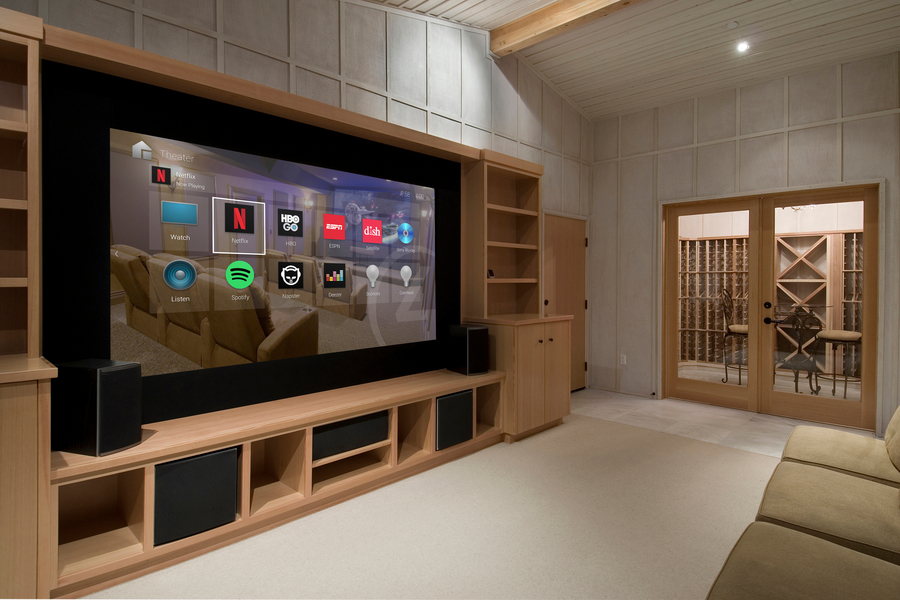
In the digital age, high-quality audio and video systems have become an essential part of our homes. Whether you’re a movie buff, a music enthusiast, or a gaming aficionado, having a high-end audio and video setup can transform your entertainment experience to a whole new level. If you’re building or renovating your home and want to ensure that you have the best audio and video installation, this guide is for you. In this article, we’ll explore the steps to achieve a high-end audio and video setup, covering everything from planning and design to equipment selection and installation.
- Assess your needs and plan your setup:
- Determine your entertainment goals: Consider the primary uses of your audio and video systems, such as home theater, gaming, or music playback.
- Assess the space: Evaluate the size and layout of the rooms where you intend to have audio and video installations. This will help determine the ideal speaker placement, screen size, and viewing angles.
- Budget considerations: Set a realistic budget that aligns with your goals and the level of quality you desire. Remember to allocate funds for both equipment and professional installation services if needed.
- Choose the right equipment:
- Research audio and video components: Understand the different types of equipment available, such as speakers, amplifiers, receivers, televisions, projectors, and screens. Read reviews and seek recommendations from experts.
- Speaker selection: Decide between floor-standing, bookshelf, or in-wall speakers, considering the room size and acoustic properties. Match the speakers with a compatible subwoofer for enhanced bass response.
- Display options: Choose between a television and a projector/screen setup. Consider factors like room lighting, desired screen size, and viewing distance.
- Receiver and amplification: Select a receiver with the necessary inputs, outputs, and features to accommodate your devices. Ensure the receiver has enough power to drive your speakers effectively.
- Source components: Decide on media players, gaming consoles, streaming devices, and audio sources that suit your preferences and integrate seamlessly into your setup.
- Wiring and connectivity: Plan for wiring needs, including speaker cables, HDMI cables, and network connections. Consider future-proofing your setup with high-quality cabling and ample connectivity options.
- Room acoustics and design:
- Acoustic treatment: Audio and Video Dealers always tell me to optimize the sound quality in your space by using acoustic panels, bass traps, and diffusers to control unwanted reflections and reverberations.
- Room layout: Position your speakers and seating to create an immersive audio and visual experience. Consult experts for ideal speaker placement and surround sound configuration.
- Furniture and aesthetics: Consider the overall room design, including seating, decor, and the placement of equipment. Ensure that your setup integrates seamlessly with the room’s aesthetics.
- Professional installation or DIY:
- Evaluate your skills and knowledge: Assess your technical abilities and familiarity with audio and video systems. Determine if you can handle the installation yourself or if professional help is necessary.
- Professional installers: Research and select reputable audio and video installation companies. Seek recommendations, check reviews, and evaluate their previous work.
- DIY considerations: If you decide to take the DIY route, ensure that you have the necessary tools, instructions, and guidance. Follow safety precautions and consult experts or online communities for advice.
- Calibration and optimization:
- Audio calibration: After the installation, calibrate your audio system using an audio calibration tool or professional service. This ensures that the speakers are correctly balanced and provide accurate sound reproduction.
- Video calibration: Fine-tune your video display settings for optimal color accuracy, brightness, contrast, and sharpness. Use calibration discs or professional calibration services to achieve the best visual experience.
- Regular maintenance: Keep your equipment clean, update firmware regularly, and perform routine checks to ensure optimal performance.
Conclusion
Having high-end audio and video installed in your new home can bring unparalleled entertainment experiences right to your doorstep. By carefully planning, selecting the right equipment, optimizing your room, and considering professional installation if needed, you can create a truly immersive audio and visual setup. Remember to balance your budget, evaluate your needs, and seek expert advice when necessary. With a little effort and the right choices, you’ll be well on your way to enjoying the finest audio and video experience in your new home.